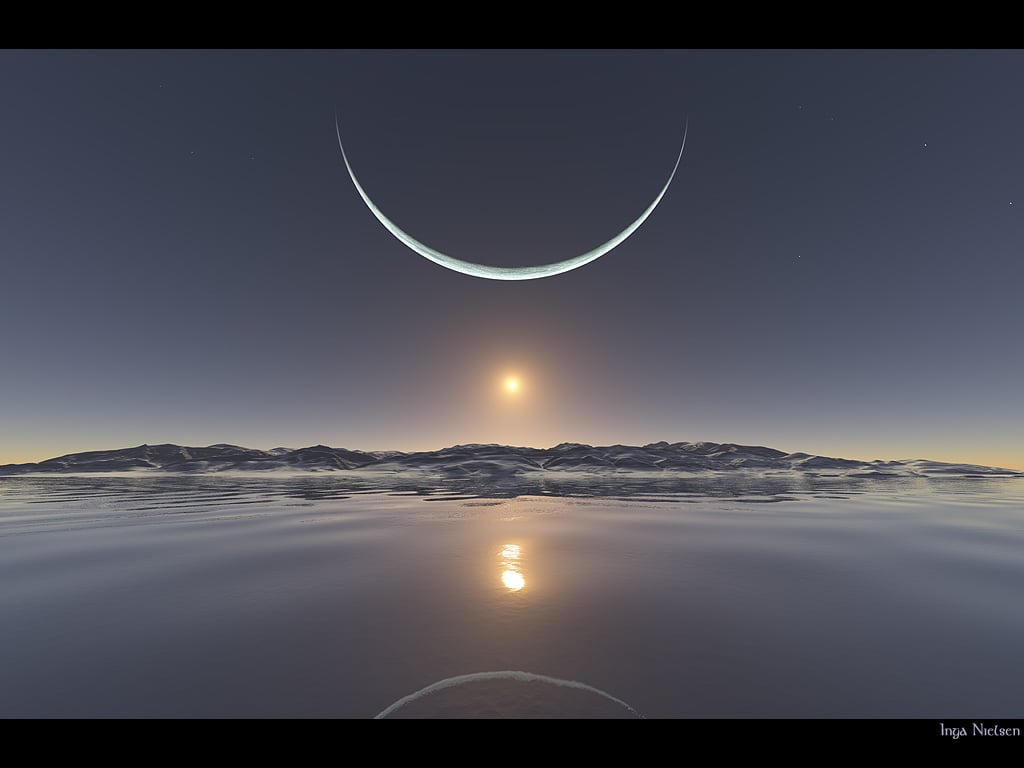[/caption]
Editor Note: We originally wrote this article back in 2008, but I've decided to pull it back out and share it again because this PHOTO WILL NOT DIE! It's a beautiful image by Inga Nielsen, but it's not real. - Fraser
Has this image been showing up in your email inbox, forwarded on from excited friends? Along with it may be the following words: "This is the sunset at the North Pole with the moon at its closest point. And you can also see the sun below the moon. An amazing photo and one not easily duplicated. You may want to save this and pass it on to others." It
is
a beautiful picture, but is it a real photo?
Even though this image was even featured on the iconic
Astronomy Picture of the Day
website, the image is in fact a work of art by artist Inga Nielsen, who studied astrophysics. The image was created with a computer program, and is called "Hideaway."
Some internet hoaxes have real staying power (like the '
Mars as big as the full Moon' hoax)
and this image falls into that "urban legend" category as well. It has been circulating around the internet for several years, and being passed around as a real photo. According to Nielsen, "Someone cut out my name, called the image "Sunset at the North Pole" and told everyone it was a photograph."
Here is the
the artist's website.
.
The image was created using a scenery generator program called Terragena. Before anything was known about the image, there were some great discussions on forums like
Snopes
and
Hoax-Slayer
. People offered some excellent arguments about the scientific and photographic elements that prove its not a real photo. So, if you have any doubts, go take a look. Their arguments are quite convincing. And of course, we now have the artist's own word for it. Sorry, but no matter how many times you go to the North Pole (or anywhere on Earth for that matter), you'll never see anything like this image portrays.
Why? The Moon and the Sun appear to be roughly the same size in the sky, no matter where you are on Earth. From the North Pole or the equator, they're roughly the same size. And this is why we get total solar eclipses, where the Moon passes in front of the Sun, and covers it up. Although the Sun's diameter is about 400 times larger than that of the Moon, the Sun is also about 400 times farther away.
So, the Sun and Moon appear nearly the same size as seen from anywhere on Earth. It is impossible to take an image like the one shown here from anywhere on Earth.
 Universe Today
Universe Today
